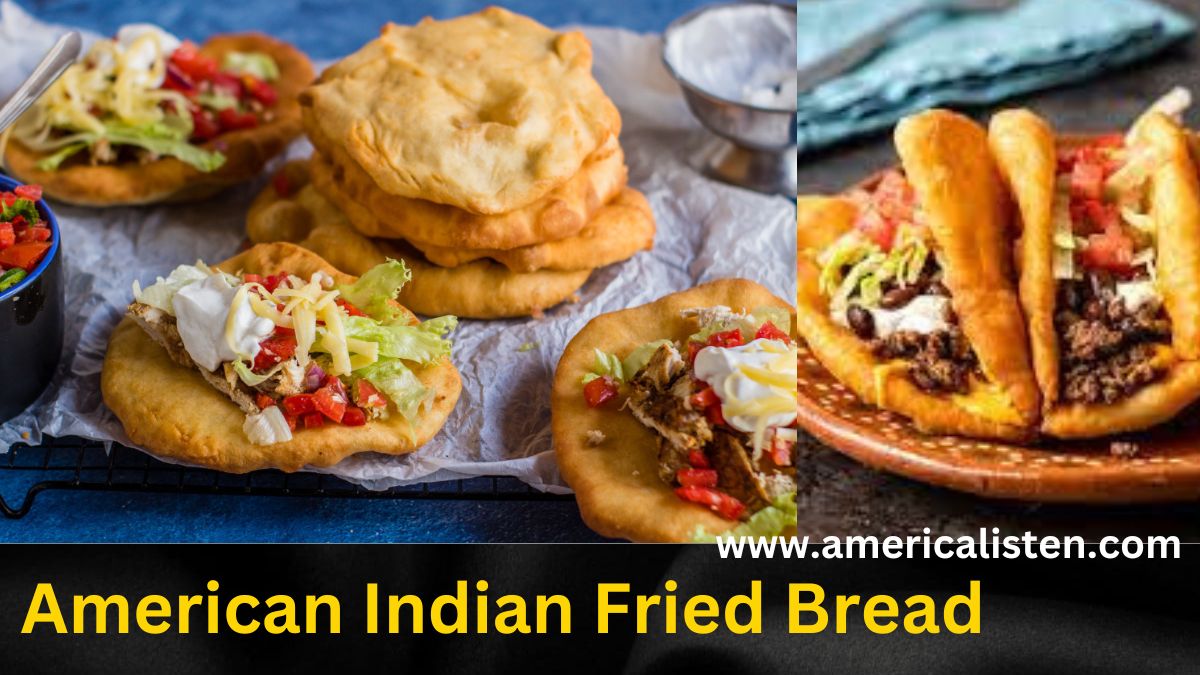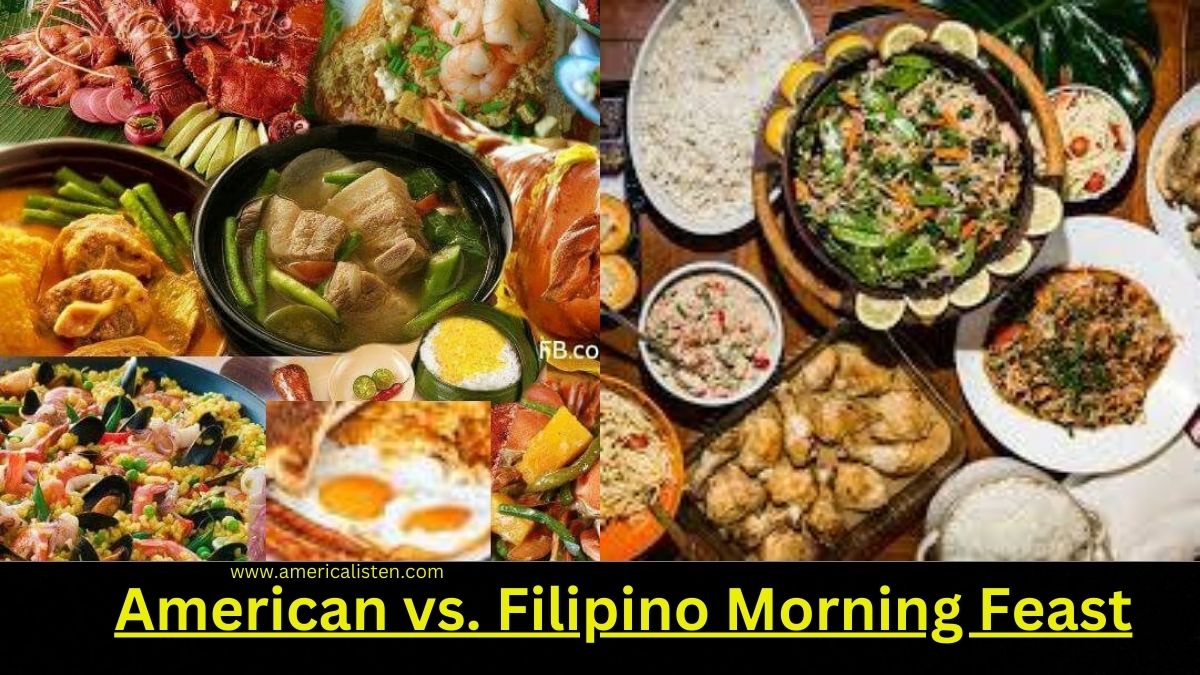In the vast tapestry of American culinary traditions, one dish stands out as both a symbol of survival and a testament to cultural resilience: American Indian Fried Bread. Also known by various names such as frybread, fry bread, or Indian taco bread, this beloved dish has deep roots in the history and heritage of Native American communities. Beyond its delectable taste, American Indian Fried Bread encapsulates a narrative of strength, adaptability, and the ability to transform hardship into something beautiful.
1.Resilience on a Plate: The Historical Journey of American Indian Fried Bread
2.From Sweet Drizzles to Savory Feasts: Exploring the Versatility of American Indian Fried Bread
3.Balancing Tradition and Moderation: Navigating the Cultural Significance and Health Implications of American Indian Fried Bread
Historical Roots:
The history of American Indian Fried Bread is intricately woven into the fabric of Native American history, reflecting the challenges and triumphs of indigenous communities throughout the centuries. This dish traces its origins to the mid-19th century, during the forced removal of Native American tribes from their ancestral lands. As communities were displaced and resources scarce, inventive adaptations to traditional recipes became a necessity.
During this period, government-issued rations often included ingredients like flour, salt, and lard – the basic components of fried bread. Native American cooks ingeniously transformed these staples into a versatile dough, creating a dish that would come to symbolize both perseverance and cultural identity.
Symbolism and Significance:
American Indian Fried Bread holds a sacred place within Native American communities, representing more than just a flavorful meal. Its circular shape is often seen as a symbol of unity, equality, and the cyclical nature of life. The act of making frybread itself is a communal experience, often involving multiple generations working together in a shared cultural practice.
Beyond its cultural significance, American Indian Fried Bread also plays a role in social gatherings and ceremonies. Powwows, tribal celebrations, and family events frequently feature this iconic dish, serving as a reminder of the resilience and strength of Native American communities.
Diverse Variations:
While the basic ingredients of American Indian Fried Bread remain consistent, each tribe and community adds its unique twist, resulting in a diverse array of regional variations. Some prefer a sweet version, topped with honey or powdered sugar, while others opt for savory toppings like chili, beans, cheese, lettuce, and tomatoes – creating the famous “Indian taco.”
Modern Adaptations and Challenges:
As the culinary landscape continues to evolve, American Indian Fried Bread has found its way into mainstream cuisine, appearing in food trucks, restaurants, and even gourmet kitchens. However, this popularity has not come without controversy, as some argue that the commercialization of this sacred dish can be seen as cultural appropriation.
Many Native American chefs and food activists are working to preserve the authenticity and cultural significance of American Indian Fried Bread, emphasizing the importance of understanding its history and respecting its roots.
American Indian Fried Bread is more than just a dish; it’s a living testament to the strength, resilience, and adaptability of Native American communities. As we savor the delicious flavors of this iconic bread, let us also take a moment to appreciate the rich history and cultural heritage it embodies – a reminder that food has the power to transcend time, telling stories that connect us to the past and shape our collective future.
“Cooking Up Heritage: A Step-by-Step Guide to Making American Indian Fried Bread”
Introduction:
Embark on a culinary journey that goes beyond the kitchen and delves into the rich history and cultural significance of American Indian Fried Bread. This step-by-step guide will help you recreate this iconic dish in your own home, honoring the traditions and flavors that have been passed down through generations.
Ingredients:
- 3 cups all-purpose flour
- 1 tablespoon baking powder
- 1 teaspoon salt
- 1 cup warm water
- Vegetable oil for frying
Instructions:
- Prepare the Dough:
- In a large mixing bowl, combine the flour, baking powder, and salt.
- Slowly add warm water, mixing continuously until a soft dough forms.
- Knead the dough on a lightly floured surface until it becomes smooth and elastic.
- Divide and Shape:
- Divide the dough into golf ball-sized portions.
- Roll each portion into a ball, then flatten it into a round disk. Ensure the thickness is consistent for even frying.
- Heat the Oil:
- In a deep skillet or frying pan, heat vegetable oil over medium-high heat. The oil should be hot but not smoking.
- Fry the Bread:
- Carefully place a flattened dough disk into the hot oil, frying each side until golden brown. This usually takes about 2-3 minutes per side.
- Use tongs to flip the dough, ensuring both sides are evenly cooked.
- Once fried, place the bread on a paper towel-lined plate to absorb any excess oil.
- Serve and Enjoy:
- American Indian Fried Bread can be enjoyed in various ways. For a sweet version, drizzle honey or sprinkle powdered sugar over the top. For a savory twist, consider making Indian tacos by adding chili, beans, cheese, lettuce, and tomatoes.
- Cultural Considerations:
- While savoring the delicious flavors, take a moment to reflect on the cultural and historical significance of American Indian Fried Bread.
- Understand that this dish carries a sacred tradition and is deeply rooted in the history of Native American communities.
- Respect the Roots:
- Acknowledge the challenges faced by indigenous communities throughout history and the resourcefulness that led to the creation of this iconic dish.
- Be mindful of cultural appropriation concerns and appreciate the importance of preserving the authenticity of American Indian Fried Bread.
Conclusion:
As you enjoy the taste of American Indian Fried Bread, remember that you are not just partaking in a culinary experience but engaging with a centuries-old tradition. Let the flavors transport you to a time of resilience and strength, and savor the connection between food, culture, and history that this iconic dish encapsulates.
Taste Of American indian fried bread
The taste of American Indian Fried Bread is a delightful combination of crispy and golden-brown exterior with a soft and doughy interior. The flavor profile is relatively neutral, allowing for versatility in both sweet and savory preparations.
- Plain Fried Bread:
- When enjoyed on its own, the fried bread has a mild, slightly salty taste from the incorporation of salt in the dough. The outer layer is crisp, offering a satisfying crunch, while the inside remains soft and pillowy.
- Sweet Variations:
- Adding sweet toppings such as honey or powdered sugar enhances the overall taste, transforming the fry bread into a dessert-like treat. The sweetness complements the neutral base, creating a delightful contrast.
- Savory Preparations:
- American Indian Fried Bread truly shines in savory applications, particularly when used as a base for Indian tacos. The mild taste of the fry bread provides an excellent canvas for the bold flavors of savory toppings like chili, beans, cheese, lettuce, and tomatoes.
- Versatility in Toppings:
- The neutral taste of the fried bread allows for a wide range of creative toppings and fillings, making it adaptable to various culinary preferences. From traditional toppings to modern interpretations, the versatility of the dish opens the door to endless flavor possibilities.
- Texture Experience:
- The texture of American Indian Fried Bread is a key element of its appeal. The contrast between the crispy exterior and the soft, chewy interior creates a satisfying mouthfeel that contributes to the overall enjoyment of the dish.
- Cultural Significance:
- Beyond its taste and texture, the cultural significance of American Indian Fried Bread adds an extra layer of depth to the dining experience. Knowing the history and heritage behind the dish can enhance the appreciation for the flavors on the plate.
In summary, the taste of American Indian Fried Bread is a harmonious blend of textures and subtle flavors. Its versatility allows for a wide range of culinary expressions, making it a beloved dish that can be enjoyed in various contexts, from sweet treats to savory delights.
Uses american indian fried bread
American Indian Fried Bread, also known as fry bread, is a versatile and delicious dish that can be enjoyed in various ways, both sweet and savory. Here’s a guide on how to use and serve this iconic bread:
- Sweet Treats:
- Honey Drizzle: One of the simplest and most delightful ways to enjoy fry bread is to drizzle it with honey. The natural sweetness of honey complements the neutral taste of the bread, creating a delectable treat.
- Powdered Sugar: Dusting the fried bread with powdered sugar adds a sweet and light touch. This is a classic and easy way to turn fry bread into a dessert.
- Savory Delights – Indian Tacos:
- Chili and Cheese: Create savory Indian tacos by topping fry bread with a generous helping of your favorite chili, shredded cheese, and perhaps a dollop of sour cream. The combination of the crisp bread and hearty toppings makes for a satisfying meal.
- Beans and Vegetables: For a vegetarian option, top fry bread with seasoned beans, sautéed vegetables, lettuce, and tomatoes. The soft and chewy texture of the bread complements the freshness of the vegetables.
- Ground Meat Toppings: If you prefer a meaty option, consider adding seasoned ground meat, such as beef or bison, as a topping for your Indian tacos. Add your favorite taco fixings for a flavorful experience.
- Dipping and Sides:
- Salsa and Guacamole: Serve fry bread with sides of fresh salsa and guacamole for dipping. The crispiness of the bread pairs well with the vibrant flavors of these traditional Mexican accompaniments.
- Soup Companion: Use fry bread as a side for soups or stews. Its versatile nature allows it to complement the flavors of a wide range of soups, adding a delightful crunch to your meal.
- Breakfast Variations:
- Fry Bread with Jam: Spread your favorite jam or fruit preserves on fry bread for a quick and satisfying breakfast option. The soft and fluffy texture of the bread pairs well with sweet spreads.
- Egg and Bacon Sandwich: Create a breakfast sandwich by adding scrambled eggs, bacon, and cheese between two halves of a fried bread. This hearty option is a perfect way to start your day.
- Creative Desserts:
- Ice Cream Sandwich: Use fry bread as a base for an unconventional ice cream sandwich. Add a scoop of your favorite ice cream between two pieces of fry bread for a unique and indulgent dessert.
- Berries and Whipped Cream: Top fry bread with fresh berries and a dollop of whipped cream for a refreshing and fruity dessert option.
Remember to consider the cultural significance of American Indian Fried Bread as you explore various ways to use and enjoy this iconic dish. Whether sweet or savory, the versatility of fry bread makes it a canvas for culinary creativity, allowing you to tailor it to your taste preferences.
Side Effects of american indian fried bread
While American Indian Fried Bread is a delicious and culturally significant dish, it’s important to note that its consumption, like many fried and high-calorie foods, may have certain health implications if consumed excessively. Here are potential side effects associated with the regular consumption of fried bread:
- High Caloric Content:
- American Indian Fried Bread is typically fried in oil, which increases its caloric content. Regular consumption of high-calorie foods without proper moderation may contribute to weight gain and obesity.
- Increased Risk of Heart Disease:
- The use of oil for frying can result in the bread absorbing a significant amount of saturated and trans fats. Diets high in these fats are associated with an increased risk of heart disease and elevated cholesterol levels.
- Blood Sugar Spikes:
- The refined flour used in fried bread can lead to rapid spikes in blood sugar levels. This can be a concern, especially for individuals with diabetes or those at risk of developing the condition.
- Digestive Issues:
- Fried foods, including fried bread, can be harder to digest for some individuals. This can lead to discomfort, bloating, and digestive issues, particularly in those with sensitive digestive systems.
- Nutrient Imbalance:
- Fried bread, especially when consumed with rich toppings or fillings, may lack essential nutrients and contribute to an imbalanced diet. It is essential to ensure a well-rounded intake of vitamins, minerals, and other nutrients from a variety of food sources.
- Inflammatory Response:
- Diets high in fried and processed foods have been associated with an increased inflammatory response in the body. Chronic inflammation is linked to various health issues, including certain chronic diseases.
- Cultural Appropriation Concerns:
- While not a physical side effect, it’s worth noting that the commercialization and appropriation of American Indian Fried Bread can have cultural implications. It’s important to be mindful of the cultural significance of the dish and approach its consumption with respect and understanding.
It’s essential to enjoy American Indian Fried Bread in moderation as part of a balanced diet. Additionally, individuals with specific health concerns or dietary restrictions should consult with healthcare professionals or nutritionists to determine how best to incorporate such foods into their eating habits. Balancing cultural appreciation with nutritional awareness is key to enjoying this iconic dish responsibly.
1.Resilience on a Plate: The Historical Journey of American Indian Fried Bread
Delve into the historical roots of American Indian Fried Bread, tracing its origins to the mid-19th century during the forced removal of Native American tribes from their ancestral lands. Explore how this iconic dish became a symbol of resilience, adaptability, and cultural identity as indigenous communities creatively transformed basic rations into a versatile and enduring culinary tradition. Uncover the narrative of survival embedded in every crispy, golden-brown bite, as the circular shape of the fry bread symbolizes unity and the cyclical nature of life.
2.From Sweet Drizzles to Savory Feasts: Exploring the Versatility of American Indian Fried Bread
Uncover the diverse array of flavors that American Indian Fried Bread offers by examining its versatility in both sweet and savory contexts. Explore the variations, from a simple honey drizzle or powdered sugar for a sweet treat to the creation of Indian tacos with savory toppings like chili, beans, cheese, lettuce, and tomatoes. Learn how this traditional dish has evolved and adapted to modern tastes, becoming a canvas for culinary creativity while preserving its cultural roots.
3.Balancing Tradition and Moderation: Navigating the Cultural Significance and Health Implications of American Indian Fried Bread
Examine the cultural significance of American Indian Fried Bread and the importance of approaching its consumption with respect and understanding. Acknowledge the potential health implications of regularly enjoying this fried delight, such as its high caloric content, potential impact on heart health, and contributions to blood sugar spikes. Emphasize the need for moderation and a balanced diet, taking into consideration both the cultural heritage and the individual’s health profile. Navigate the complexities of cultural appreciation while being mindful of nutritional awareness, striking a harmonious balance between tradition and health.
To know More About Recipes Please Click HERE
You May like :
“American Potato Recipe Perfection: From Breakfast to Dinner – Uncover the Tastiest Spud Secrets!”


